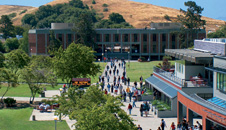Portal:Storage
From Wikibon
| (4 intermediate revisions not shown) | |||
| Line 43: | Line 43: | ||
</p> | </p> | ||
[[Storage virtualization design and deployment | read more...]] | [[Storage virtualization design and deployment | read more...]] | ||
| - | |} | + | |}[[Category:Backup and restore]][[Category: Blade computing]][[Category: Business compliance]][[Category: CDP]][[Category: Careers]][[Category: Careers wikitips]][[Category: Clustered storage]][[Category: Compliance and discovery]][[Category: Enterprise mobile wikitips]] |
Current revision as of 00:18, 23 February 2010
The Wikibon Data Storage Portal contains data storage industry research, articles, expert opinion, case studies, and data storage company profiles.
Latest Information Storage Research
| >>Join our Group | >>Become a Fan | >>Follow @Wikibon | >>Read the Blog | ||||
WikitipPrevention of Over-Cooling in Blast FreezersFood safety is a top concern for many businesses in food and beverage industry like restaurants, catering units, bakeries, meat and fish processing. Time and temperature are essential for the food to remain safe to eat. The blast freezer is a freezer which is extremely cold. Such freezers preserve food at very low temperatures, freezing it extremely quickly. A blast freezer can reduce temperature of a food from +70 degrees C to -18 degrees C in less than 4 hours. Bacteria cannot thrive in the extremely cold environment of blast freezers. At these low temperatures, blast freezer has almost no way of preventing frost build-up. Frost build up in the blast freezer can lead to odors that can affect the food. Employees opening doors can create temperature fluctuations, which also affects products inside. To prevent over-cooling and temperature fluctuations, businesses in the food industry ca use temperature monitoring solutions. These solutions provide temperature monitoring for blast freezers over a wireless network to ensure temperatures are within acceptable tolerances and alert store managers when certain unfavorable conditions exist. This can prevent perhaps thousands of dollars worth of product from spoiling. These solutions have some benefits you should take into consideration if you’re in the food industry: Real time monitoring of blast freezers and climate controlled facilities Reduced product losses and increased profit and product integrity Flexible and automated reporting of objective data for all assets supporting KPI performance management, HACCP, AQIS, food safety and compliance requirements Automated reporting that reduces labor costs from manual reports Reduces carbon footprint from reduced electricity used through door monitoring Most companies buy blast freezers to meet very stringent regulations that aim to prevent any bacteria proliferation which takes places when the food is at a temperature between +65 and +10°C. Consumers are also demanding greater visibility into the temperature monitoring for your freezers to ensure products have been maintained at the proper temperature. |
Featured Case StudyVirtualization Energizes Cal State UniversityJohn Charles is the CIO of California State University, East Bay (CSUEB) and Rich Avila is Director, Server & Network Operations. In late 2007 they were both looking down the barrel of a gun. The total amount of power being used in the data center was 67KVA. The maximum power from the current plant was 75kVA. PG&E had informed them that no more power could be delivered. They would be out of power in less than six months. A new data center was planned, but would not be available for two years. |
|
Featured How-To Note |
Storage Virtualization Design and DeploymentA main impediment to storage virtualization is the lack of multiple storage vendor (heterogeneous) support within available virtualization technologies. This inhibits deployment across a data center. The only practical approach is either to implement a single vendor solution across the whole of the data center (practical only for small and some medium size data centers) or to implement virtualization in one or more of the largest storage pools within a data center. | |||



